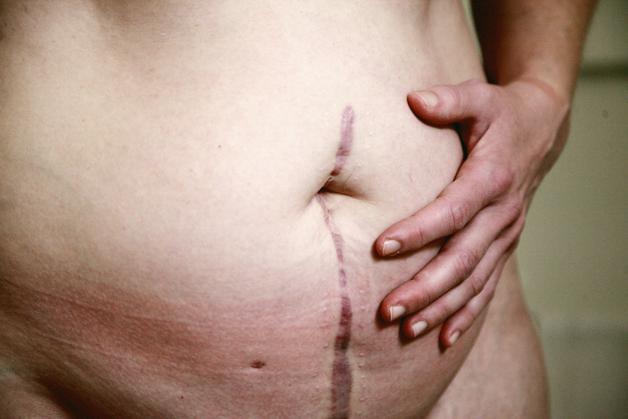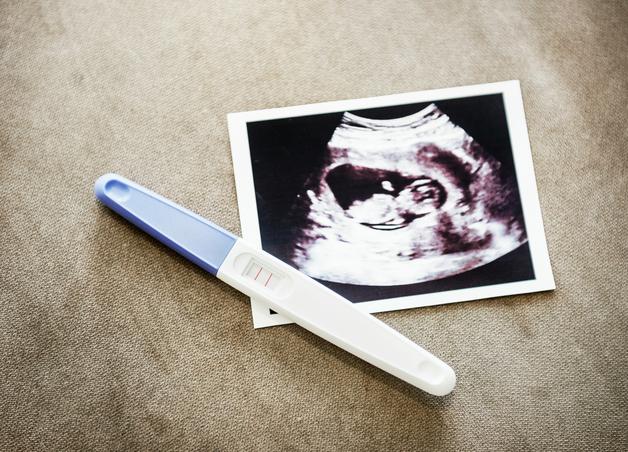Feeling those strange twinges and relentless muscle tension? Welcome to one of pregnancy’s less glamorous companions: pregnancy aches. The very anticipation of parenthood is often clouded by back pain, joint stiffness, or even that sudden electric jolt in the hip. Maybe your night’s sleep gets cut short by a sharp calf cramp, or you find your shoulders protesting after a long day—nothing in the glossy parenting magazines quite prepares you for these physical surprises. Rest assured, while pregnancy aches can spark concern, they often mirror your body’s extraordinary adaptations. Here’s a journey through the science, the red flags, and practical steps to help you reclaim comfort and calm.
Understanding Pregnancy Aches: Why Do They Happen?
Imagine your body building a new life—hormones like progesterone and relaxin surge, softening ligaments and making joints looser (all in preparation for birth). Combine that with the gradual expansion of your uterus, a shifting center of gravity, and your muscles working overtime to keep up. Stretching, pulling, cramping, aching: these sensations, collectively known as pregnancy aches, show up for many expectant parents as:
- Lower back pain that intensifies as the uterus grows.
- Stiff hips, pelvis, or thighs after waking up.
- Sudden cramps, especially at night.
- Occasional abdominal discomfort—sometimes sharp, sometimes a dull ache.
- Soreness in the legs, shoulders, or neck, particularly after activity or long periods of immobility.
Mineral imbalances also play a role. Low magnesium or calcium tends to provoke muscle cramps and amplify that sense of fatigue. Equally, disrupted sleep and increased stress (like a racing mind at midnight) lead to muscle tension and reinforce aches, creating a feedback loop that puzzles many parents.
Curious about whether your pregnancy aches are “normal”? For most, they ebb and flow, becoming more pronounced with physical strain or lack of rest. However, sharp, persistent, or localized pain calls for medical attention—one should always be on alert for warning signs such as fever, swelling, or changes in fetal movement.
Anatomy of Pregnancy Aches: Symptoms, Locations, and Evolution
How do pregnancy aches typically appear? Picture these scenarios:
- Morning stiffness, especially in the lower back or hips (that feeling of being ‘locked’ until you stretch).
- Generalized dull pain, radiating across thighs, calves, or even the shoulders.
- Intense tension at the sides of the abdomen, particularly in the second trimester (classic round ligament pain).
- Nights interrupted by sudden, involuntary leg cramps.
- Headaches triggered not just by hormonal shifts, but by changes in blood flow and posture.
Symptoms fluctuate across the trimesters. Perhaps at first, it’s only fatigue and the odd cramp. By the second trimester, the combination of weight gain and ligament stretching triggers more consistent discomfort, while the third trimester turns movement and sleep into tasks requiring extra planning and support.
Still, every situation is unique: hydration, quality of rest, activity, and even emotional wellbeing shape the expression of pregnancy aches. Yet amid the variability, some red flags are universal—severe pain, swelling, fever, neurological signs, or sudden shortness of breath demand urgent appraisal.
Types and Mechanisms: What Makes Pregnancy Aches Unique?
Pregnancy aches adopt a wide vocabulary:
- Persistent lower back pain, driven by the loosening of spinal ligaments and increasing abdominal weight.
- Pelvic girdle pain, causing discomfort that sometimes radiates down the thighs and across the pubic area.
- The sharp, pull-like sensation of round ligament pain, often surprising parents during sudden movement.
- Cramping in calves, especially overnight, often traced to low magnesium, dehydration, or circulatory changes.
- Sciatic nerve pain, with its shooting discomfort from the lower back down the leg—a natural result of postural adjustments and muscle tension.
- Tingling or numbness in the hands (think carpal tunnel syndrome), linked to fluid retention.
- Headaches and occasional migraines, fueled by hormone fluctuations, altered sleep, and increased blood volume.
- Breast soreness tied to tissue growth and hormonal surges.
- Digestive discomfort, from heartburn to constipation, as the uterus compresses abdominal organs.
Underlying all these: an impressive, if sometimes uncomfortable, orchestration of physical change. Whether it’s muscle fatigue from poor posture or cramps from a late-night salt craving, every symptom offers a clue to the adaptation underway.
Relief Strategies: Practical Ways to Soothe Pregnancy Aches
What really works? Parents often ask if there’s a magical remedy, but in reality, it’s about a toolkit of gentle interventions and a sprinkle of patience.
- Gentle stretching upon waking or before bed eases morning stiffness and supports healthy blood flow (don’t underestimate a few minutes of guided prenatal yoga).
- Low-impact activities—walking, swimming, tailored prenatal yoga—help maintain balance, improve flexibility, and foster a positive mind–body relationship.
- Warm baths or heating pads soothe tense muscles, while localized cold packs may reduce inflammation where discomfort is intense.
- Support devices (from well-chosen shoes to maternity belts and supportive pillows) can dramatically reduce strain, especially for lower back and pelvic pain.
- Hydration and a balanced diet—focus on foods with potassium, calcium, and magnesium—curb the risk of cramps and support metabolic needs.
- Adequate sleep, supported by body pillows and regular rest breaks, acts as a natural muscle relaxant and balances mood.
- Prenatal massage from trained professionals (or even careful self-massage) can unlock muscle tension, support circulation, and provide a sense of relief.
- Medications: Acetaminophen (paracetamol) is typically considered safe but should always be discussed with your healthcare provider. Nonsteroidal anti-inflammatories like ibuprofen are usually reserved for special circumstances.
Perhaps most essential: listen to your body’s cues. There’s no one-size-fits-all solution; the most effective strategies are those adapted to your unique rhythm and needs.
Preventing Pregnancy Aches: Daily Habits and Posture
Is it possible to avoid pregnancy aches altogether? Perhaps not entirely, but thoughtful daily habits can certainly lessen the frequency and severity.
- Practice an upright, aligned posture—ergonomic setups for workspaces, sturdy chairs, elevated screens, and frequent movement breaks all help.
- Lift properly: bend knees (not your back), distribute loads, and avoid sudden, awkward movements.
- Incorporate micro-breaks throughout the day; a few minutes to stretch, move, or simply breathe can prevent tension from accumulating.
- Avoid prolonged standing or sitting—alternate when possible.
- Stay active with gentle exercise, adapting to your current abilities; professional guidance is especially valuable for developing a safe routine.
- Emphasize a diet rich in green vegetables, nuts, and whole grains (for magnesium and calcium), and maintain adequate hydration.
- Self-care rituals—relaxation techniques, mindfulness, and deep breathing—help manage stress, which can otherwise amplify aches.
Parenthood already demands flexibility—both mentally and physically. Anticipating the body’s changing needs and responding proactively creates a buffer against the more disruptive aspects of pregnancy aches.
Red Flags and When to Seek Medical Advice
While most pregnancy aches are harmless, specific warning signs indicate more serious issues. Keep alert for:
- Sudden, severe abdominal or pelvic pain, especially if unrelieved by rest.
- Swelling of the hands, feet, or face, paired with persistent headaches or vision changes (classical features of preeclampsia).
- Unusual vaginal bleeding, fever, or painful urination.
- Strong, regular uterine contractions before 37 weeks.
- Shortness of breath, chest pain, fainting spells, or marked dizziness.
- Numbness, muscle weakness, or any significant change in sensation.
- Reduced fetal movement after recognisable patterns are established.
These symptoms may indicate conditions like preeclampsia, placental abruption, blood clots, infection, or even impending early labor. Early intervention is vital for both parent and baby’s safety.
The Impact of Pregnancy Aches on Daily Life
Daily comfort often feels elusive—simple actions like getting out of bed, bending to tie shoes, or even enjoying a walk around the block may suddenly seem challenging. Unrelieved pain chips away at the sense of wellbeing, interfering with sleep and sometimes amplifying anxiety or low mood.
Yet, this is also an opportunity for openness—communicating pain or exhaustion to healthcare teams, adjusting expectations, and reaching out for support. Small acts of self-compassion, whether accepting help or prioritizing rest, create a more sustainable path through the oscillations of pregnancy aches.
Key Takeaways
- Pregnancy aches are a frequent, sometimes surprising aspect of carrying new life, shaped by hormonal shifts, weight changes, and posture adjustments.
- Strategies for comfort include gentle stretching, supportive gear, mineral-rich diets, proper posture, hydration, and listening to your body’s needs.
- Warning signs like severe or sudden pain, unusual swelling, or neurological changes require urgent medical evaluation.
- Every pregnancy is unique—flexibility, creativity, and open dialogue with healthcare professionals pave the way for more manageable, even empowering, experiences.
- Remember, you’re not expected to handle everything solo; resources and professional support exist to lighten your load. For tailored advice and free health questionnaires for your child, you can download the Heloa app.
Embrace each shift, ask questions, and don’t hesitate to seek out what makes this chapter more comfortable. With the right tools, pregnancy aches become not only manageable but a testament to your body’s incredible journey.
Questions Parents Ask
Can pregnancy aches feel like the flu?
Absolutely, some parents notice body aches or a sense of overall fatigue in early pregnancy that can remind them of having the flu. These sensations are often linked to hormonal fluctuations and your body’s increased workload. However, if body aches are paired with fever or other signs of illness, it’s important to speak with a healthcare professional for a full assessment, just to rule out any infection that might need attention.
Is it normal to have aches in the first trimester?
Yes, experiencing various aches in the first trimester is quite common. Many notice cramping similar to menstrual pain, as well as discomfort in the lower back or legs. This is mostly due to hormonal changes and the body beginning to adjust as pregnancy progresses. These sensations are generally considered normal, but if pain becomes very intense or you notice additional symptoms like spotting or fever, reaching out to your health provider is always a good option for reassurance and care.
What should I do if pregnancy aches become severe or don’t go away?
It’s understandable to feel worried when aches become strong or persistent. While mild to moderate discomfort is expected, ongoing or worsening pain—especially if it’s accompanied by other symptoms such as swelling, bleeding, difficulty breathing or fever—should be discussed with a healthcare professional. Prompt support allows you to access the most appropriate care and offers peace of mind for you and your growing baby.

Further reading:








